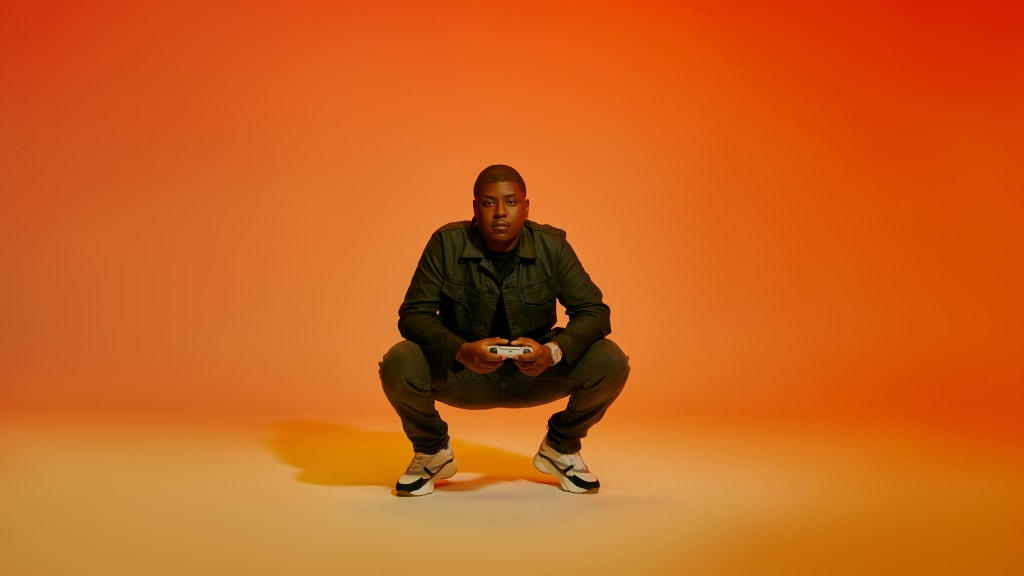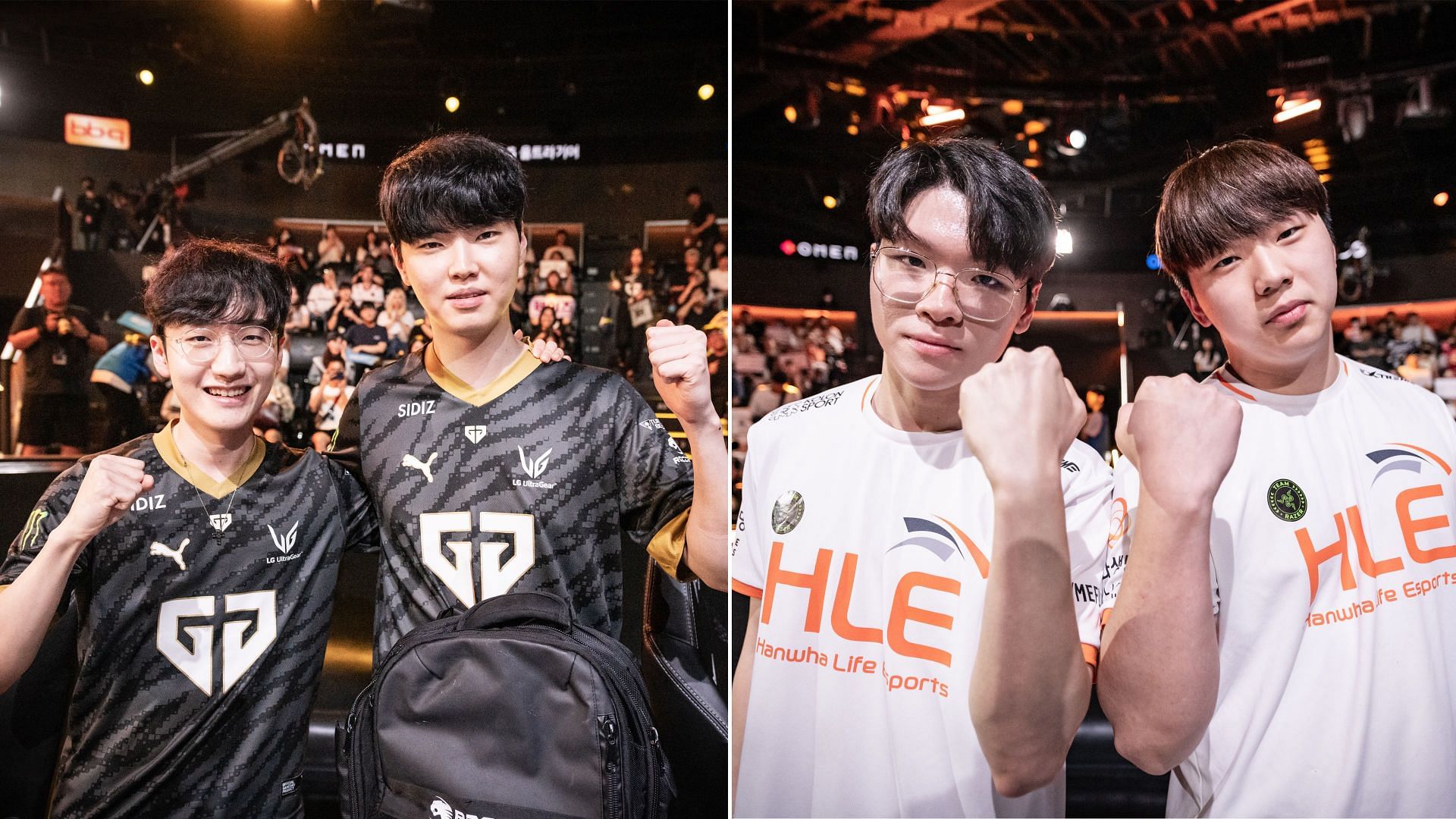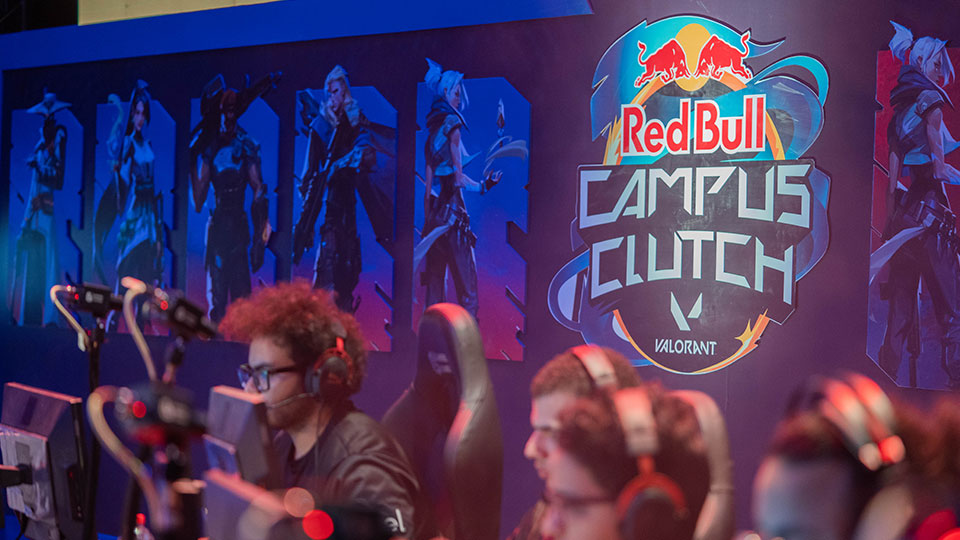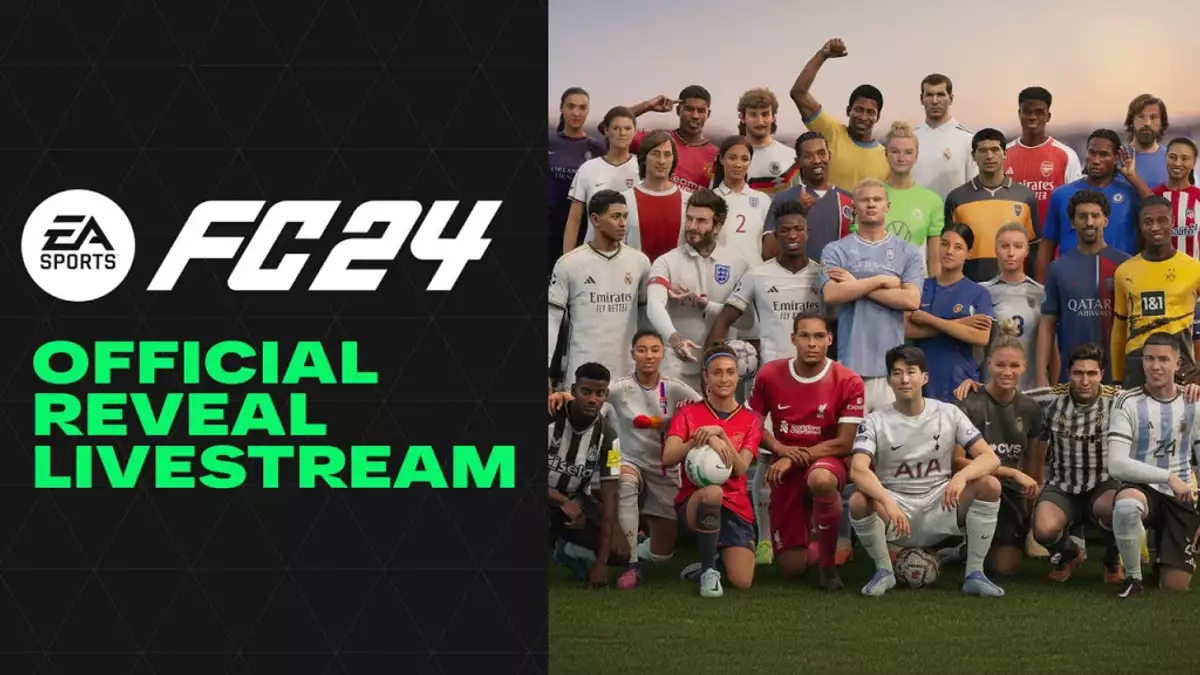The child of a single mother, Delane Parnell grew up in an impoverished neighborhood off Detroit’s Seven Mile Road. His father was murdered a few months before he was born. His mother transported him from home to home as she bounced between jobs. Still, the young Parnell had a knack for business. By the time he was 17, he had parlayed a job mopping floors at a MetroPCS into co-owning three Detroit-area cellphone shops.
Seven years later, a chance meeting with a venture capitalist inspired Parnell to move to Los Angeles and found a gaming startup. His company had a name–PlayVS–but little else beyond office space at startup studio Science Inc. Still, he had no funding, no employees. Despite all that, his goal was nothing short of bringing esports to the highly lucrative and largely untapped high school market.
He was on the verge of fulfilling his lifelong dream–or failing miserably.
Delane Parnell strolled into the Santa Monica offices of Science for his first day in June 2017 and was led to his workstation: A small wooden desk in the corner of the second floor with a stack of Post-it notes on it. This was where he would begin to work on his new venture, which he’d decided to call PlayVS (as in “play versus”). To personalize his space, Parnell installed the oversize monitor he’d brought with him, and then printed out some photos and taped them above his desk. One was a screenshot of the original Google homepage–a reminder of the $700 billion company’s humble beginnings. Another was a photo of Jay-Z and Sean “Diddy” Combs. Their music had served as the soundtrack to Parnell’s childhood, and he’d hung their likenesses on the wall of his bedroom back in Detroit. Both had grown up without their fathers in drug-ridden environments, fought their way to massive success, and then held the door open for other Black men and women behind them. They were reminders of what was possible.
Science assigned an asset manager named Talia Rosenthal to serve as Parnell’s day-to-day contact. The Oregon native had worked in venture capital in Singapore for a few years before returning to the States. At Science, Rosenthal guided the company’s startups through business strategies, fundraising, partnerships, and daily operations. Parnell and Rosenthal had a critical first task: To figure out the best point of entry into high school esports.
Learning from a failed previous gaming startup, Parnell decided to put less early emphasis on the product and more on developing business relationships. He reached out to youth organizations including the Boys & Girls Clubs of America, hoping an alliance with that nonprofit could help get PlayVS’s still-hypothetical product into students’ hands after school. He asked colleges and universities that had created esports programs about their scholarship offerings, and if they could be used to entice high schools to create teams. He spoke with decision makers at game publishers, and sought out anyone who had an informed opinion on youth esports. He worked nights and weekends, practically living in the office. When visitors came to meet him at Science, he would lead them through the firm’s second floor into a conference room. “My team sits over there,” he would say and gesture toward his desk, which was near employees from several other startups. It technically was true, though the guests had no idea the “team” in question consisted only of Parnell.
Parnell and Rosenthal had recognized early that the surest way to crack the high school gaming market was through the National Federation of State High School Associations, or NFHS. The high school equivalent of the NCAA, the organization had the ability to declare esports an officially sanctioned sport and recommend that states’ governing bodies adopt it. It was the real-world equivalent of a cheat code: A partnership with the NFHS wouldn’t just give PlayVS an avenue into the demographic it sought, but would also provide the startup with leverage over publishers and defensibility against competitors.
Unbeknownst to Parnell and Rosenthal, the century-old organization had been discussing esports internally for the previous year and a half. A Pew study at the time found that 72 percent of teens played video games, including 84 percent of boys. According to the NFHS’s own research, more kids were playing video games than traditional sports. The NFHS had spoken with a handful of gaming companies over the prior 18 months about building the online infrastructure for high school competitions, but nothing had stuck.
“How about you give us a demo in Atlanta next month?” they asked. “I’d love that,” said Parnell. There was just one problem: PlayVS’s product didn’t actually exist.
When Parnell exchanged emails with David Rudolph and Robert Rothberg, two NFHS executives, he decided to shoot his shot, and asked if they could chat about his high school esports platform. They agreed. A few days later, Rosenthal and Science CEO Mike Jones sat in with Parnell as he pitched, over speakerphone, what his startup could offer the NFHS: Essential gaming infrastructure built with software and, eventually, partnerships with game publishers.
“How far along is PlayVS with its software?” the NFHS execs asked. “Do you have a product ready now?”
“We do,” said Parnell. “We have a demo ready to go. Let me fly out there and show it to you all.”
“How about in our headquarters in Atlanta next month?” the execs suggested.
“I’d love that,” said Parnell.
There was just one problem. PlayVS’s product didn’t actually exist. Says Rosenthal: “I looked at Delane when the call ended and said, ‘What are you talking about? We have a pitch deck. We understand our strategy. What is this demo that you speak of?’ He was like, ‘Just don’t worry about it.’ “
The game was on. Parnell scrambled to sketch a wireframe (essentially a blueprint of the platform) using design software. He asked designers and engineers he’d worked with to help bring the mockup to life. They spent the next few weeks working under contract building a product demo, collaborating with Parnell to make sure the front end was well designed and functional, to give the appearance it was further along than it was. One day in November, a month after Parnell’s phone pitch, Parnell and Science’s Peter Pham flew to Atlanta with the completed demo. They met in a conference room in an NFHS office with Rudolph, Rothberg, and Mark Koski, another of the organization’s executives.
The NFHS at the time was evaluating about a half-dozen companies as potential esports partners, from upstarts like Electronic Gaming Federation to publishers like Riot Games and Activision Blizzard. All were larger and more established than PlayVS. When Parnell and Pham walked into the room, the organization was fresh off a meeting with Super League Gaming, a three-year-old company backed by nearly $30 million in VC money. The group had been impressed with the company’s proposal–a fact Rothberg made sure to communicate to Parnell and Pham as soon as they sat down. Tension filled the air. Parnell opened his laptop and dove into his demonstration.
“So,” he began, “here’s how a student will log in and view their schedule and the opposing team’s roster. Here’s where they click to drop into a lobby; when all the students are in, the match begins. When it ends, the relevant data gets sent to PlayVS, and we’ll present it to the players like this.” The NFHS folks seemed receptive. Parnell had detailed even the most granular aspects. What was supposed to be an hourlong meeting went on for three.
Toward the end of the conversation, Koski dropped a bomb: “We expect to make our decision in about a year.”
As Parnell and Pham’s Uber weaved through traffic to catch the return flight, Parnell felt deflated. A year was a long time to wait, especially with a favorable outcome far from guaranteed.
Koski, Rudolph, and Rothberg, meanwhile, discussed what they’d heard. They liked that PlayVS didn’t see high schools as some additional revenue stream–it was focusing its efforts exclusively on the academic level. They were impressed with Parnell’s knowledge of the space, and liked that he shared their most fundamental philosophies, such as not offering first-person-shooter games and creating a no-cut sport open to any student who wanted to play. They knew the startup was small, though perhaps not quite how small, but also knew it had the support of Science, the firm behind the recent fast successes of Dollar Shave Club and DogVacay.
“We generally take things very slow at the NFHS, and we vet thoroughly,” Koski says. “We’re going to be rubber-stamping something for 20,000 high schools, 16 million students, and a million and a half coaches. We knew, through talking with Delane and Peter, that they had it together. It made the process a lot shorter than I would have ever expected.”
Two weeks after the meeting, Koski called Parnell. The NFHS, he told him, was interested in partnering with PlayVS.
Parnell was ecstatic. Still, this was only step one. While the NFHS had the ability to approve of high school sports and activities, the choice to actually adopt them was up to the athletic association in each individual state. The NFHS held its winter meeting each January, a four-day event at which administrators and athletic directors from across the country convened. This year, the conference would be in Scottsdale, Arizona. Parnell was going to have to come and pitch the idea of adopting esports to all 50 states.
Soon after, a young video game enthusiast named Laz Alberto began working at Science. One of his first tasks was to help Parnell prepare for his presentation at the NFHS winter meeting. Talia Rosenthal and her husband were spending the week on vacation in Morocco, so Science arranged for James Hicks, another asset manager, to pinch-hit. Hicks hadn’t been hands-on with PlayVS to that point, so he spent much of December taking a crash course on the high school esports space. He, Parnell, and Alberto spent the weeks leading up to Christmas studying the structure and politics of the NFHS and honing the messaging Parnell would deliver to the organization and state athletic associations.
The day after New Year’s, the trio flew to Arizona. They arrived at a campy but scenic Western-themed resort outfitted with cacti, palm trees, fountains, and life-size busts of cowboys and Native American warriors. The grounds teemed with high school athletics folks, most of them older former teachers dressed as if they were about to play 18 holes at a country club.
Hicks and his family retired to their room. Parnell and Alberto ventured down to the outdoor hot tub to try to relax before the big days ahead. Most of their interactions to that point had revolved around tech, esports, and PlayVS, but the two didn’t know much about each other. Alberto had heard about Parnell’s journey in general terms–the projects in Detroit, the single mother, the cellphone stores–but hadn’t heard how they all connected.
“I had believed Delane would be successful from the first time I met him,” Alberto says. “But when we talked about his background and how that played into what he was doing, that was when I knew he was a generational founder, and that his story was worth knowing, and, in my case, worth being a part of in some way.”
The next day marked the conference’s first full slate of activities. Alberto, Hicks, and Parnell aggressively mingled, writing down the name of any executive who seemed even remotely interested to follow up with them later. “The median age was probably like 65–imagine ex-gym teachers, wrestling coaches, heavy mustachioed men,” recounts Hicks. At one point, he found himself chatting with a younger female athletic director. “She said, ‘I’m looking forward to this. We’ve had challenges before with controversial sports, getting them acknowledged and certified.’ In my mind,” says Hicks, “I’m thinking, was this like skeleton luge or something super dangerous? So I asked for an example. She said, ‘We had the hardest time with boys’ soccer.’ I was like, ‘Boys’ soccer!’ She’s like, ‘Yeah. There was a good amount of state athletic directors who thought all-American boys should play only football.’ I recall thinking, We’re fucked. Men’s soccer is the most popular sport in the world. If boys’ soccer is an issue, there’s no way they’re going for video games.”
Afterward, the trio met to discuss Parnell’s pitch for the next day. They’d gleaned what questions the educators had about esports. Now, with their laptops and notebooks spread across a coffee table in the lobby, they honed the presentation, adding and removing sections, changing a word here, a metaphor there. After Hicks went up to bed, Parnell and Alberto worked into the night, the table filling with soda cans, bottles of water, bags of vending machine chips, and Styrofoam containers of hotel-bar chicken wings. A little after 2 a.m., as Parnell rehearsed the presentation with headphones on, he had a jarring thought: What if the associations want details about PlayVS’s pricing structure and projections of how quickly the product can scale? He wouldn’t have an answer–the startup hadn’t yet decided on a fee or mapped out any growth goals. Parnell whipped out his phone, scrolled to Rosenthal’s name, and tapped the FaceTime button.
In her hotel room halfway across the world, Rosenthal was getting ready for another day in Casablanca with her husband when she noticed the missed calls on her phone. There was a follow-up text from Parnell in all caps: “I NEED TO TALK TO YOU NOW.” Rosenthal FaceTimed him back.
“The NFHS is going to want to understand our structure, to know if this thing really scales,” Parnell said frantically. “Do I give them figures up front? Do I tell them how much they’re going to make right now?”
“No, definitely not,” she replied, her husband looking on. “We haven’t modeled this out yet. We don’t want to tell them anything that we might need to backtrack on.”
“We need to figure this out now,” said Parnell.
“I think that you can get around it,” she told him. “Massage your presentation in such a way so you don’t give them all of the information yet, and we’ll talk to them in more detail later. The last thing we want is to sign a deal with the NFHS and then fall massively short of our promises. This relationship is supposed to be built for the long term.”
Parnell calmed down, reassured that Rosenthal–an expert on early-stage companies–thought it acceptable for him to work around the question if asked. He hung up and let the couple go to breakfast.
Soon the sky started to lighten over southern Arizona. When Hicks came downstairs, he found Parnell and Alberto in the lobby, putting the finishing touches on the presentation. Soon, the attendees started making their way to the ballroom.
Parnell, Alberto, and Hicks took their seats. When Parnell’s turn came to speak, he addressed the more than 100 administrators and athletic directors in attendance. On the screen streamed clips of thousands of spectators packed into arenas watching League of Legends tournaments. He pulled up the demo of PlayVS’s software and explained how simple launching esports would be for any school that wanted to.
When he concluded, the audience broke into enthusiastic applause. The first phase was complete. The next was to attend a more intimate meeting–another pitch followed by a question-and-answer period with NFHS and state association executives. These were the ones whose opinions mattered most; they would ultimately decide whether to adopt esports–and if PlayVS was the right company for the job.
Halfway across the world, she noticed the missed calls on her phone and a follow-up text from Parnell in all caps: I NEED TO TALK TO YOU NOW.
Alberto and Hicks sat facing the audience, the rest of the desks in a U-shape formation around them. There, Parnell delivered another presentation, this one on the specifics of how the software would work and what the states would need to do to get started. When he finished, the floor opened to a deluge of questions about everything from creating season schedules to whether the sports would be coed. When time was up, the three men rose–only to be blocked by the administrators. They weren’t finished with them yet. Alberto, Hicks, and Parnell stood a few feet apart, each fielding inquiries from the educators around them, keeping one ear out for their comrades. When one heard another get stumped, he’d jump in:
“One hundred million viewers last year … “
“No publisher deals yet, but we expect to soon … “
After what felt like a lifetime of rapid-fire questions and answers, the attendees dispersed for other meetings. The trio had survived.
Parnell and Alberto wandered out to the patio and sat by the fire pit, eating quesadillas and talking under the desert sky as light gave way to darkness. Close to midnight, Parnell’s cellphone rang. The NFHS executives wanted to meet with them. They came out one by one to join Parnell and Alberto on the patio. When everyone had arrived, the group delivered the news. The NFHS wanted to partner with PlayVS and was ready to sign the paperwork. The deal would be exclusive; the NFHS couldn’t partner with another esports startup for at least five years.
That night, in a rented villa, the wine flowed. Parnell, Alberto, and the NFHS folks toasted their new partnership to deliver officially sanctioned esports to high schools. When Hicks arrived at breakfast the next morning to find Parnell and Alberto downing eggs and hash browns, Parnell gave him the good news.
Parnell was “psyched,” recalls Hicks. “Like he had been shot out of a cannon.”
Later that day, after four days and three nights of running on pure adrenaline, Parnell and Alberto slept hard on the plane ride home. The buzz from the deal had begun to dissipate. They had cleared the first level. Their energy levels were low. Though they didn’t know it yet, they were going to need the rest–the real game had just begun.
Parnell’s persistence in finding that ideal partner would pay off in a huge way. By late 2020, PlayVS had secured $106 million in funding and received a valuation of $400 million. It had users in every U.S. state. Since PlayVS’s launch, the company has hosted competitions for esports teams at 11,000 high schools–more than half the NFHS-sanctioned schools in the country.
Adapted from the book Ahead of the Game: The Unlikely Rise of a Detroit Kid Who Forever Changed the Esports Industry, by Kevin J. Ryan, available now for preorder and to be published in January 2022 by HarperCollins Leadership, an imprint of HarperCollins. Copyright 2022 by Kevin J. Ryan. He is an Inc. staff writer.
From the October 2021 issue of Inc. Magazine
https://www.inc.com/magazine/202110/kevin-j-ryan/playvs-delane-parnell-esports-ahead-game-book.html





